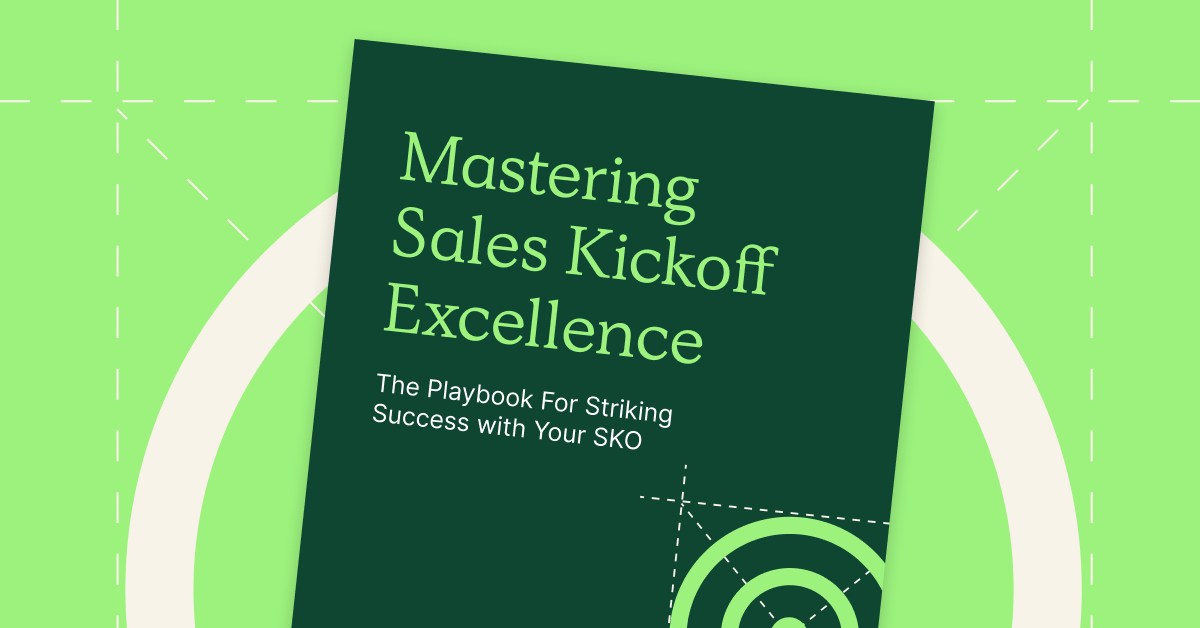Tech layoffs are increasing while sales win rates are decreasing.
Sales leaders from around tech have reported the lowest outbound conversion rates they’ve ever seen, and suddenly, chief financial officers of $1B companies are showing up on discovery calls.
That’s the position our sales teams find themselves in today.
“Winning has never been harder,” said Jon Zoob, VP of Revenue at Postal.
As a result, teams have had to adjust, experiment, and get creative to find success in this market.
Pavilion VP of Growth Laura “LG” Guerra, for instance, said they changed their value proposition, pricing, and packaging strategy, and started the year with a major emphasis on the customer.
Jon and his team also made moves by adopting a “spearfishing” sales strategy in place of “casting a wide net.”
QuotaPath too has prioritized our “right customer.”
“We’re not firing customers,” said our Chief of Staff Graham Collins. “We’re just making changes so that those customers that aren’t a good fit can go quietly so that we can focus on our high-value customers.”
10 things we learned from “How to adjust your sales motion to meet today’s buyer”
10. Keeping the dollars you have is as important as bringing in new customers.
Teams have to focus on growing the revenue from their existing customer base.
To rally your team around gross revenue retention and net revenue retention, use your compensation levers to motivate and align your team. This might look like paying the same rate on expansions as new biz or giving your account executives quota and commission credit on upsells within a certain timeframe following the initial purchase.
“If you only compensate on total contract value, you might walk away from customers who want to sign up with 5 users who come back in three months looking to add 40,” Graham said.
“We pay the same on expansions as we do new business,” Jon said.
9. It’s okay to say goodbye to problematic customers.
“Numbers can be deceiving,” said Jon. “Just because you have a lot of customers doesn’t guarantee your business is healthy. If your customer acquisition cost (CAC) is whack, this will eventually be detrimental to your business.”
If you have two customers and one requires significant upkeep, resources, and personnel from your team, it might be time to let that customer go.
8. CSMs are evolving more into Sales/Account Manager roles.
“We’re going to see companies start to train and compensate CSMs like Sales teams,” said LG. “We started to see this trend during COVID, and now we’re seeing CSMs go through discovery and negotiation training.”
To help build that hunger found within your Sales org. to your CS team, comp them.
LG, for instance, ran an effective SPIF in May for her CS team.
She and her team hypothesized that if they could get C-levels involved in the implementation/onboarding process, customers would be more likely to renew and at higher levels.
To encourage them to get more comfortable running traditional outreach to engage multiple stakeholders, they paid $100 for every meeting the CSM booked with a C-Suite.
7. Consider dropping decelerators/cliffs.
“I’m seeing a lot of teams reduce or remove entirely decelerators or cliffs within their compensation plans,” Graham said.
Jon added, “Traditional things don’t work during untraditional times.”
Cliffs, or commission floors, require reps to meet a minimum performance threshold before unlocking commissions. We see these and decelerators, a lower commission rate paid out on deals before a rep passes a milestone, used often.
But when the market is shaky, these compensation measures hurt your reps more than anything. Axe them.
6. B2B companies are adopting B2C buying trends.
That means buyers are researching, trying out, and checking out review sites on their own before touching base with Sales.
And with it, gone are the days of big sales teams reaching out to large numbers of prospects without buying intent. To be successful, leaner sales teams should be pinpointed in their outreach efforts to focus on those with intent only.
5. Re-think your KPIs and invite your team to create them.
“Over the course of the last year, we probably changed our Sales key performance indicators (KPIs) three times,” said LG.
One included shifting her sales development team KPIs from adding a set number of prospects to an email cadence to the number of LinkedIn activities, as their team found more success there.
Additionally, during a Growth team off-site, she invited her teams to collaborate on their KPIs.
“I told our SDRs, your goal is to set 12 sales-qualified opportunities a month. Show me the math and how you’ll get there,” said LG. “
Rather than her telling them how to do it, they came up with it and presented their path to success to the teams. This led to a healthy discussion and debate and also made it easier for LG to hold them accountable.
“It gives them a voice in the matter,” said LG.
4. It might be time to let go of your bottom performers.
In a sobering turn of the conversation, all three leaders mentioned the impact of letting go of bottom performers.
“Removing your bottom performing reps can provide more for your top performing reps,” Graham said.
“Parting ways with your underperformers opens up budgets for SPIFs, bonuses, and extra compensation for your top performers,” LG added.
3. Get flexible and creative.
“If you’re holding people to the same board plan from 6 months go, I would expect to see burnout,” Jon said. “You have to be agile. Get creative. Is it a bounty for logos versus just annual recurring revenue commissions?”
Graham suggested implementing minimum guarantees or quota vacation.
“No matter what you do this month, we’ll pay you 50% of your variable compensation,” Graham said.
2. Experiment with SPIFs.
We’ve mentioned SPIFs a couple of times. But we can’t reiterate it enough. Use SPIFs to test behaviors and see if the results yield a significant enough change to implement in the comp plan later down the road.
Other SPIF best practices to consider:
“Use SPIFs to get reps out of their comfort zones,” said LG. “I SPIF’ed our SDRs who could set the most demos using video or gifting platforms to help them grow their skills.”
Jon said, “Make sure there is a ‘why’ behind your SPIF. Make sure the people you’re asking to do it understand it.”
And, Graham added that SPIFs and experiments will sometimes fail.
“SPIFs will fail and that’s okay,” said Graham. “And if they don’t, you’re not experimenting enough.”
1. Empathy is a must. So is celebrating.
Lastly, it is absolutely necessary that leaders remain empathetic.
“It’s tough,” said Jon. “Team members, even the people you’re working are not having the easiest time buying.”
You have to lead with empathy.
“When it’s all said and done — smile. Have fun,” Jon said. “We put ourselves through a lot, and if you can’t find the bright spot in your day, it’s going to be tough to get through these times. Any win, any victory — celebrate it. They’re harder to come by.”
***
Thank you to Jon, LG, and Graham for this open and honest conversation.
For support in creating compensation structures fit for today’s market and automating the tracking and calculation of commissions, schedule a time to learn more about QuotaPath.

